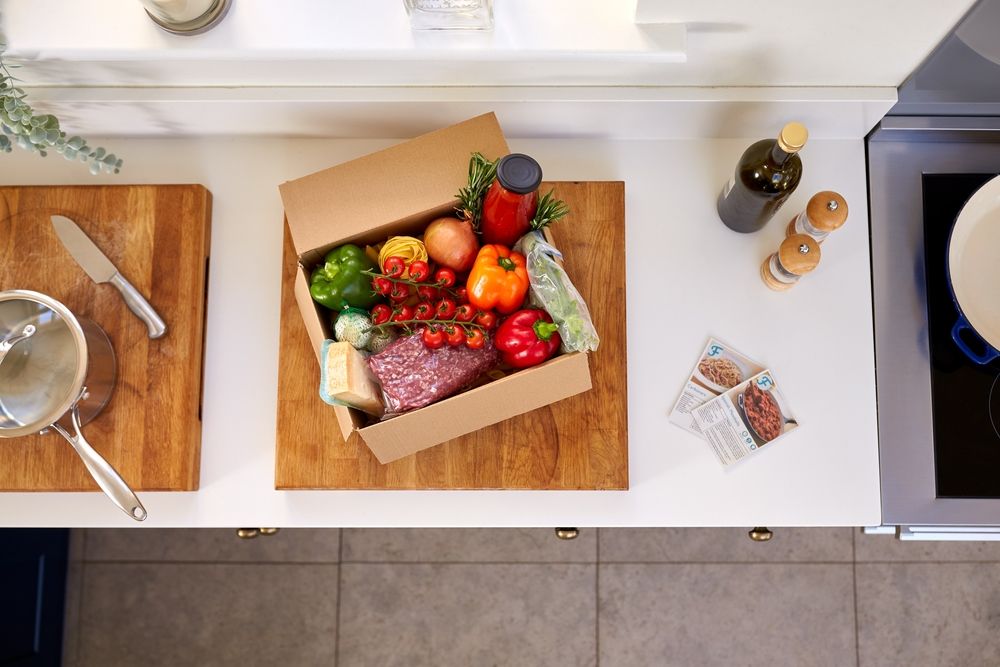Meal kits have become a go-to solution for busy households—offering pre-portioned ingredients, simple recipes, and the promise of delicious, home-cooked meals without the hassle of planning or grocery shopping. But while they save time, they can also stretch your budget if you’re not careful. Subscription fees, packaging, and portion limitations can make these convenient services pricier than expected. The good news? With the right strategies, you can enjoy the convenience and flavor of meal kits while keeping your spending under control.
Start With the Right Plan for Your Budget
Choosing the right meal kit service and subscription plan is the first step to saving money.
-
Compare multiple services: Prices vary widely between brands like HelloFresh, Blue Apron, and EveryPlate. Check per-meal cost and portion size.
-
Opt for fewer meals per week: Start small and increase gradually only if it fits your budget.
-
Choose family-size portions: Larger portions often cost less per serving than individual plans.
-
Look for flexible subscriptions: Pick companies that allow you to skip weeks or pause deliveries easily.
-
Check delivery areas: Some services offer free shipping in specific zones—take advantage of that.
Understanding your meal frequency, cooking habits, and family size helps you pick a plan that aligns with your financial goals.
Use Introductory Offers and Referral Discounts
Meal kit companies frequently run promotions for new and returning customers.
-
Sign up for first-time user deals: Most services offer major discounts or even free boxes for your first few deliveries.
-
Use referral codes: Share your link with friends—each new signup can earn you credit or discounts on future meals.
-
Rotate between providers: Take advantage of introductory offers from different companies.
-
Search for promo codes online: Coupon sites and cashback apps often feature exclusive deals.
-
Join mailing lists: Brands send limited-time offers through newsletters.
By stacking intro deals and referral bonuses, you can enjoy months of meal kits for a fraction of the standard price.
Skip Weeks Strategically
Meal kits are designed for convenience, but not every week requires a delivery.
-
Pause during busy or travel weeks: Avoid paying for kits that might go unused.
-
Skip when leftovers pile up: If you still have unprepared meals, take a break until you’ve caught up.
-
Align deliveries with pay cycles: Adjust delivery dates to avoid overspending between paychecks.
-
Use the “skip” feature often: Most platforms allow flexible scheduling at no extra cost.
-
Plan around holidays: Skip weeks when you know you’ll dine out more often.
Skipping strategically ensures you only pay for kits when you’ll actually use them.
Stretch Each Meal Kit Further
Meal kits may portion ingredients carefully, but that doesn’t mean you can’t get more out of them.
-
Add pantry staples: Rice, pasta, beans, or bread can stretch a two-person meal into three servings.
-
Use leftovers creatively: Repurpose extra vegetables or sauces into next-day lunches.
-
Combine kits: Mix ingredients from two boxes to create new dishes.
-
Save garnishes: Use leftover herbs or seasonings in future meals.
-
Cook smaller portions: Save half for later instead of preparing the entire kit at once.
With a little creativity, each meal kit can yield multiple meals—effectively lowering the cost per serving.
Choose Budget-Friendly Kits
Not all meal kits are priced equally. Some specialize in affordability.
-
Try value-focused brands: EveryPlate and Dinnerly offer lower-cost meal kits without sacrificing flavor.
-
Compare ingredient quality vs. price: Some premium services charge more for organic or specialty items that may not be essential.
-
Watch portion sizes: Cheaper kits with small servings might not save money if you need to supplement with other foods.
ADVERTISEMENT -
Look for minimal packaging kits: Some budget-friendly options save costs by using simpler packaging.
-
Opt for vegetarian options: Plant-based meals are often less expensive than meat-based ones.
Choosing affordable meal kit providers lets you enjoy convenience without paying luxury prices.
Recreate Your Favorite Meal Kits at Home
Once you’ve tried a few kits, you can easily replicate their recipes using grocery store ingredients.
-
Save the recipe cards: They’re detailed enough to recreate dishes later.
-
Buy ingredients in bulk: Purchasing staples like spices, sauces, and grains yourself is far cheaper.
-
Batch cook your favorites: Prepare meal kit-inspired dishes in larger quantities to freeze or reheat later.
-
Find copycat recipes online: Many bloggers share DIY versions of popular meal kit dishes.
-
Make your own kits: Pre-portion ingredients at home for a similar experience at a lower cost.
Recreating your favorite dishes lets you keep the variety of meal kits while paying grocery prices.
Use Cashback, Credit, and Rewards
Meal kit subscriptions can also earn you cashback or reward points.
-
Use credit cards with dining or grocery rewards: Some categorize meal kits under these spending types.
-
Link accounts to cashback apps: Rakuten, Honey, and Capital One Shopping often feature meal kit deals.
-
Refer friends regularly: Each referral can offset a week’s delivery cost.
-
Track spending: Monitoring your total subscription cost ensures you’re staying within your food budget.
-
Cancel unused memberships: If you’re not earning rewards, it may be time to switch to another provider.
Reward programs help turn your routine meal kit orders into a source of savings.
Be Mindful of Add-Ons and Upcharges
Meal kits often tempt customers with premium ingredients and extra sides.
-
Avoid “premium” upgrades: Extra proteins or fancy sauces can increase prices quickly.
-
Skip desserts or drinks: These can cost more than making them yourself.
-
Check the final total before checkout: Fees add up fast if you’re not careful.
-
Stick to your plan: Decide how many meals you’ll order per week and resist impulse add-ons.
-
Read portion details: Some “add-ons” duplicate items you already have in your pantry.
Focusing on your core meals and skipping upsells can make a big difference over time.
Common Mistakes to Avoid
-
Forgetting to pause your plan: Unused deliveries waste money and ingredients.
-
Ignoring delivery fees: Some kits charge hidden shipping costs after the promo ends.
-
Choosing premium brands unnecessarily: You may be paying for packaging, not quality.
-
Failing to track savings: Without monitoring, meal kit subscriptions can quietly grow into a major expense.
-
Ordering more meals than needed: Over-ordering leads to waste, not value.
Avoiding these mistakes keeps meal kits a convenient, affordable addition—not a financial burden.
Meal kits can be an amazing time-saver for busy households, but that doesn’t mean they have to strain your wallet. By selecting the right plan, leveraging discounts, skipping weeks strategically, and stretching ingredients creatively, you can enjoy all the benefits of convenient home cooking without overspending. Learn to recreate your favorite dishes, avoid unnecessary extras, and use rewards programs to make your meal kit experience both delicious and budget-friendly. With mindful habits, meal kits can fit comfortably into your weekly routine—and your budget.





